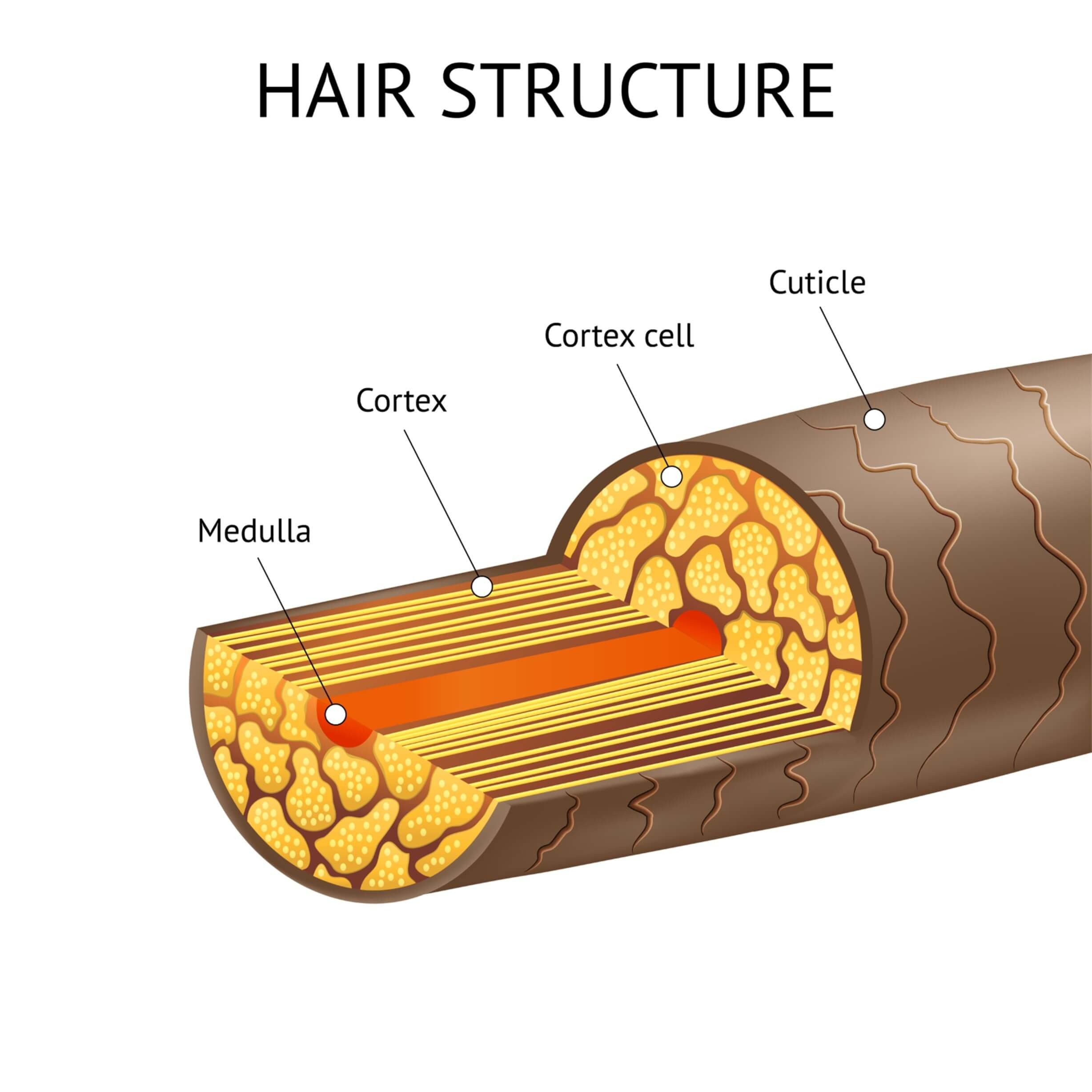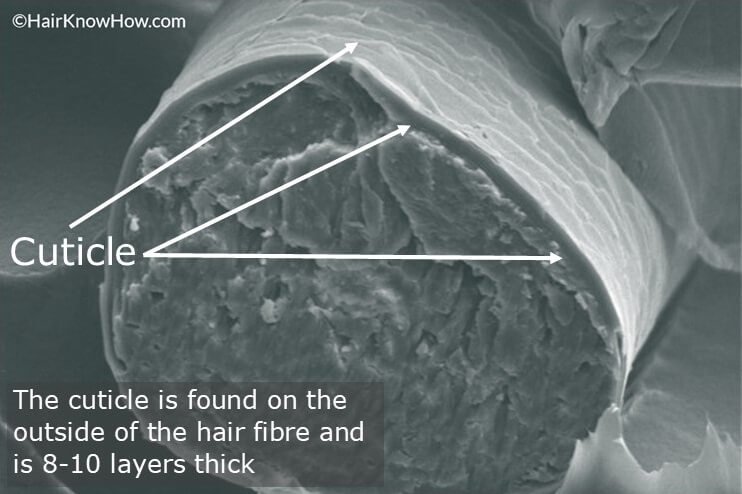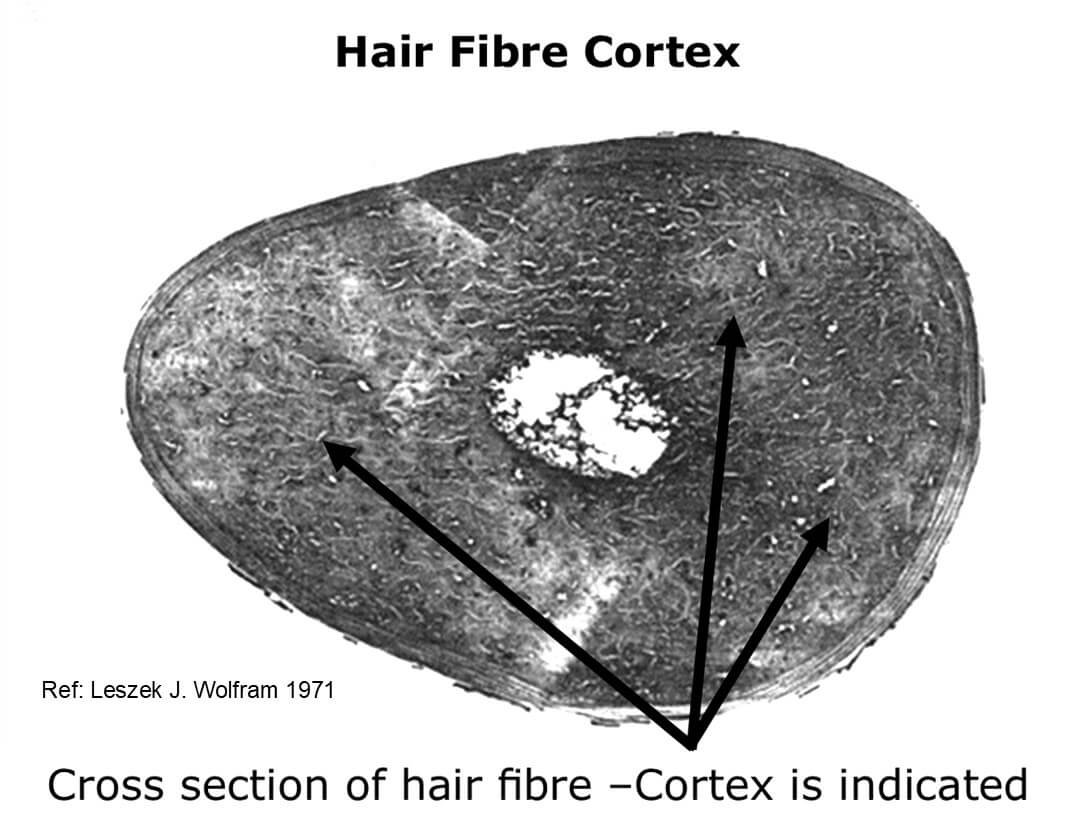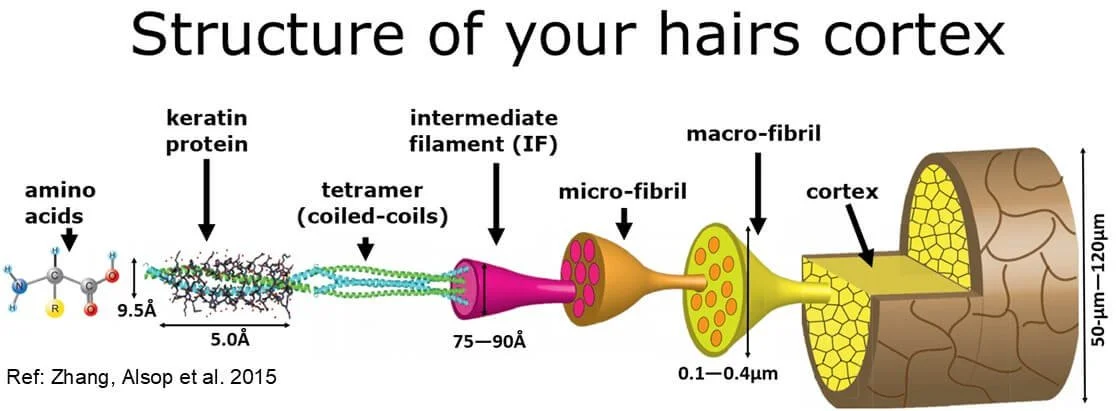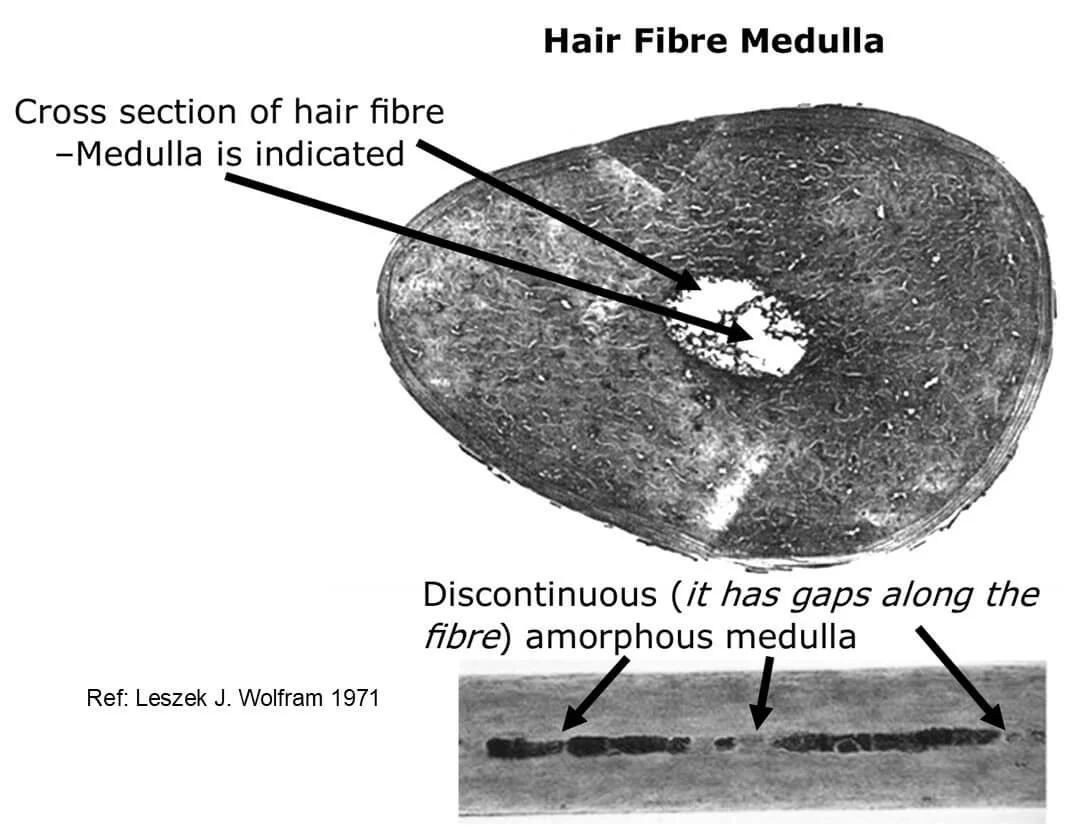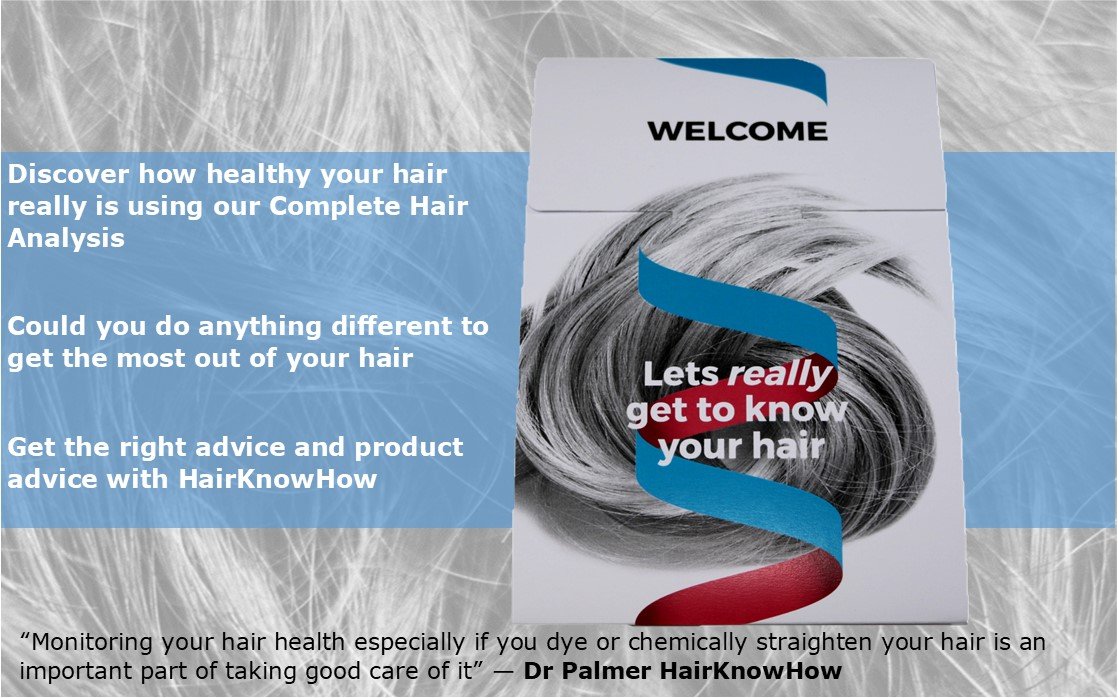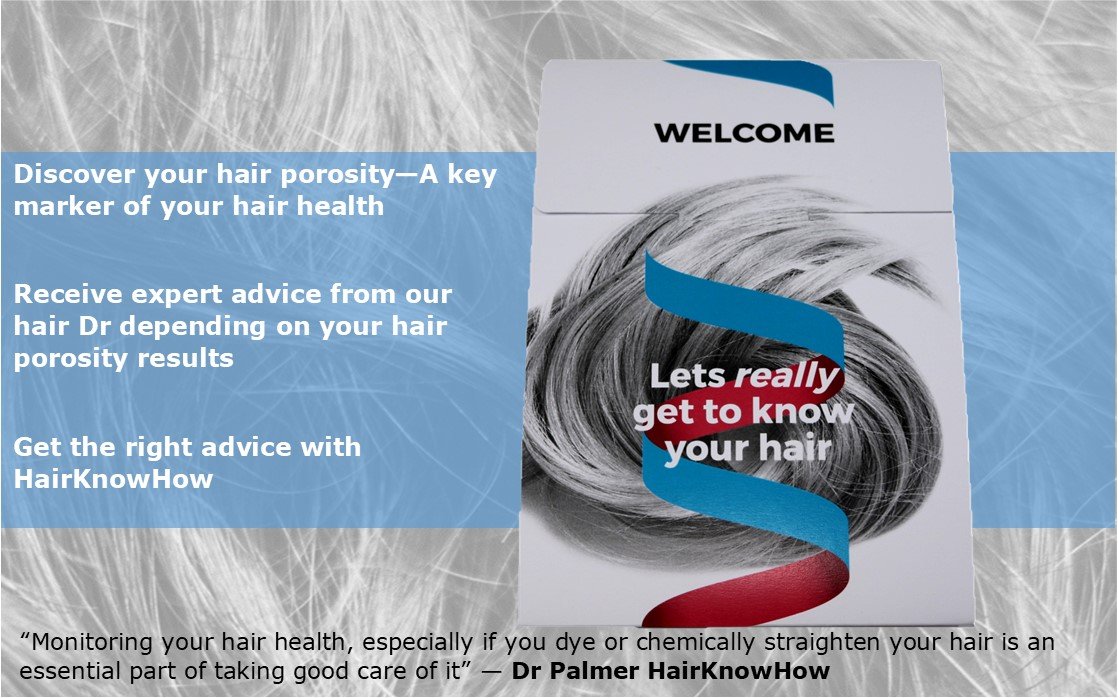Updated January 2023 By Dr Jonathan Palmer
Hair is a highly organised structure and is made up of three main parts. Starting at the hair surface and working in, there is the cuticle, followed by the cortex and then the medulla in the centre. The medulla is not found within every hair fibre, with thicker fibres being more lightly to possess medulla.
The cuticle comprises 8-10 layers of flat overlapping translucent cells - meaning they are essentially transparent, like window glass. The primary role of the cuticle is to protect the underlying cortex. The cells that make up the cuticle (like tiles on a roof) are stabilised and held in place by disulphide bonds.
As an Amazon Associate I earn from qualifying purchases - Click here to read our Affiliate Disclaimer
For further reading, we would recommend this book. It’s excellent and gives a great introduction to hair structure and science, boosting your knowledge of everything hair even further!
The direction of the cuticle cells points away from the scalp, much like tiles on a house. This directionality can be felt when moving your fingers through your hair. Hold a few fibres between your thumb and index finger (whilst holding your hair out straight in front of you). Compare the resistance you feel when moving your fingers away from your scalp to moving your hand towards your scalp; your hair will feel rougher between your fingers when moving towards your scalp. You feel this increased roughness because you are moving your fingers against the direction of the individual cuticle cells that make up the cuticle layer.
The health of the cuticle is vital because it affects the hydration, texture, feel and glossiness/shine of your hair. The surface of the cuticle is hydrophobic (water-hating), which means that the cuticle readily binds to oils and other hydrophobic substances. Hair sprays, mousses and gels all act directly on the cuticle. The cuticle is physically damaged by brushing, especially when wet. Commercial hair care products containing active chemicals, e.g. peroxide or thioglycolate (dyeing and perming solution, respectively), disrupt and lift the cuticle, increasing cuticle loss. Products such as conditioners and oils soften the cuticle making it less brittle, reducing loss. Due to its protective role, the cuticle is considered the most critical health indicator by many hair scientists.
The cortex is the largest constituent of hair, making up ~75% by weight. The cortex is in the centre of each hair fibre and consists of long, tightly packed keratin spindles stabilised by disulphide bonds. These keratin spindles are arranged in a hierarchy, starting with the smallest structure, the keratin proteins themselves, to the largest and final structure, the cortex itself.
The cortex gives hair its strength and is also home to melanin granules. These are packets of pigment that are responsible for your hair colour. The cortex is also responsible for giving hair its shape and texture, resulting in your hair being either straight, wavy, curly or kinky.
Everyday hair care products that can damage the cortex include perming, curling, straightening and bleaching solutions. The chemicals within these products penetrate your hair and destabilise the disulphide bonds within the cortex, both weakening and disorganising it. Chemical treatments ultimately increase the porosity of hair (creating holes and cracks within the cortex), resulting in hair fibres increasing from low porosity to high porosity hair.
The cuticle layer is wrapped around the cortex and protects it, so the health of the cortex is primarily determined by the health of the overlaying cuticle layer. The exposure of the cortex ultimately results in the mechanical failure of a fibre, significantly increasing hair breakage, split ends and decreased colour and glossiness.
The medulla is located at the centre of many but not all hair fibres - typically within thicker, coarser terminal hair.
If present, the medulla may also be discontinuous, meaning that it is patchy and does not run through the entire hair fibre length. The medulla has a higher lipid content and has reduced disulfide bonds in comparison to other hair structures. The medulla is very porous, meaning that it contains large voids containing air or possibly water and oils. The function of the medulla is currently unknown but debated in the literature.
As an Amazon Associate I earn from qualifying purchases - Click here to read our Affiliate Disclaimer
For further reading, we would recommend this book. It’s excellent and gives a great introduction to hair structure and science, boosting your knowledge of everything hair even further!
If you would like to see your hair in incredible detail and see your cuticle, cortex and whether you have the medulla within your hair, then please take a look at one of our hair analyses below. If you have any questions please feel to contact us.

